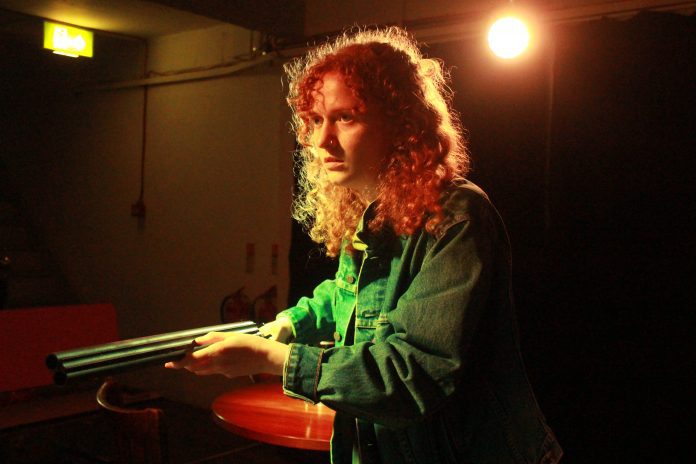Madeleine Farnhill’s new, original play is both profound and devastating. When mother and daughter Deborah and Megan are trapped inside with only each other after a deadly disease consumes their hometown (sound familiar?), The Hunger suggests that those you hold dearest may be the most dangerous. This collaboration between Farnhill, co-director and producer Helen Denning, and production manager Alex McCann was the group’s debut at Sheffield’s DINA Venue, and it’s safe to say they did not disappoint.
Set in North Yorkshire during the 1980s, Megan and Deborah take refuge together on their farm in an attempt to avoid a fatal disease that has infected the rest of the outside world. Although this storyline sounds a little too close to home, Farnhill’s writing provides a humorous escape from the world’s experiences of isolation. The play begins with Megan sitting around her kitchen table drinking whiskey, and before her mother has the chance to join her, Megan slumps off complaining: “I want to go in my room”. If by the end of the lockdowns you weren’t sick of the people you live with and day drinking, then I’m afraid you did it wrong.
Farnhill’s writing digs its way under your skin. The play is filled with various ambiguous lines that aren’t all tied together until the final moments of the show. For example, Deborah showers her daughter Megan with affection at the beginning, claiming that she simply wishes to keep her daughter safe, but as the play progresses we learn that her consistent cuddles and kisses are fuelled by manipulation. The chemistry between actors Susannah May (Deborah) and Ellen Trevaskiss (Megan) is exceptional.
Designer Johnathan Payne has outdone himself. Situated in a basement-like space in Sheffield’s DINA venue, the show was able to draw audiences in so far that it became impossible to escape. With a minimal set—a single table, two chairs and a sink in the middle of the room—The Hunger relies more on characters’ actions and descriptions rather than physical appearances. Accompanied with a dim red, blue and purple light, Payne carefully controls the audience’s emotions and the tone of the play.
Though Deborah and Megan steal the spotlight, the two kitchen chairs hold vital significance. The clever swap of where the characters sit in the show is a subtle, yet ingenious, aspect. The play starts with Deborah sat closer to the sink and Megan sat closer to the stairs for an easier escape. But as the story unfolds, audiences feel Deborah’s obsession with her daughter grow, and by the end, they learn of her dark secret. The final image displays Megan sat in her mother’s chair, signalling that there is now no way out.
The Hunger is powerfully chilling. Going into a show open-minded is always encouraged, but I must warn you, if you’re not a huge fan of unhappy endings, this one probably isn’t for you.
Words by Emily Whitehouse.
Support The Indiependent
We’re trying to raise £200 a month to help cover our operational costs. This includes our ‘Writer of the Month’ awards, where we recognise the amazing work produced by our contributor team. If you’ve enjoyed reading our site, we’d really appreciate it if you could donate to The Indiependent. Whether you can give £1 or £10, you’d be making a huge difference to our small team.
